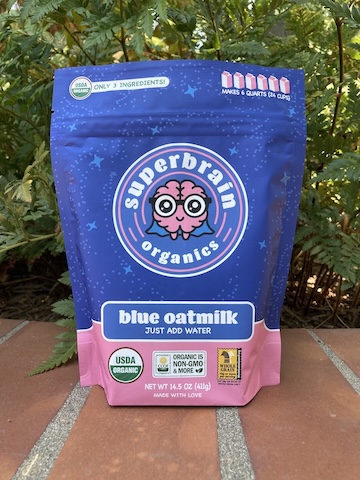Share This
When you think about whole grains, do you think about summer? We sure do! While many whole grains have to be cooked before being eaten, that doesn’t mean they have to be eaten hot. Cold whole grains make a nutritious and refreshing choice on a hot summer day, without the need to hover over a stove for your full meal.
A classic way to have cold whole grains is overnight oat or chia puddings; you can even combine them for extra fiber! This no-cook method saves time in the morning and gives you a cool, creamy breakfast that’s extremely versatile. All you need is rolled oats, a liquid (milk, yogurt, or a plant-based alternative), and whatever extras like berries, seeds, a drizzle of honey, or a spoonful of nut butter. Mix everything together in portioned containers, let it sit in the fridge overnight, and wake up to a ready-made meal that’s both energizing and easy to digest in warm weather. There are even drinks that have whole grains, like certain varieties of oat milk, which are an easy way to boost your whole grain consumption in cold preparations like smoothies or overnight puddings.
What makes cold whole grains so perfect in summer is their ability to nourish without weighing you down. They provide steady energy, helping you stay full longer without the sluggishness that sometimes comes with heavier, hot meals. Plus, they’re easy to batch cook, making them perfect for meal prepping ahead of heat waves, busy work days, or for packing in a relaxing beach picnic. From whipping up a jar of overnight oats before bed to tossing a quick quinoa salad together in the afternoon, cold whole grains are a smart choice for any summertime meal. They’re satisfying without being heavy, great at soaking up flavor, and they’ve got a powerful mix of fiber, protein, and nutrients to keep you going. We think many grain salads taste better after a few hours in the fridge, so make them ahead and let the flavors marinate!
Around the world, people have been enjoying cold whole grain dishes for centuries. In the Middle East, tabbouleh and kisir (a Turkish bulgur salad) are refreshing, herb-packed staples served chilled. In Italy, farro salads (insalata di farro) are popular summer fare, tossed with seasonal vegetables and olive oil. Over in Japan, buckwheat soba noodles are cooled and served with chilled broth (zaru soba). And in parts of Africa, millet or sorghum grains are used in cold porridges or salads during warmer months. These traditions confirm that hot or cold, grains have a global legacy of flavor and texture that can be adapted into smart seasonal eating.
Stay cool, eat well, and let your fridge do the cooking for the rest of summer. How do you like to eat whole grains in the summer? Let us know in the comments!
To have our Oldways Whole Grains Council blog posts (and more whole grain bonus content!) delivered to your inbox, sign up for our monthly email newsletter, called Just Ask for Whole Grains. (Vik)



Add a Comment